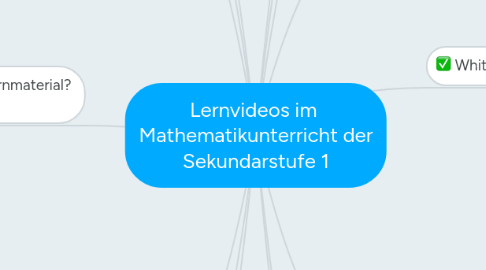
1. Dokumentenkamera
1.1. Elmo
1.1.1. http://elmo-germany.de
2. Animationsvideo
2.1. PowToon
2.2. GoAnimate
2.3. VideoScribe
3. Filmaufnahme
3.1. Hardware: Handy, VIdeokamera
3.2. Software
3.2.1. Movie Maker
3.2.2. Videopad
4. Slidecast
4.1. Movenote
4.1.1. kostenlos
4.1.2. http://www.movenote.com
4.1.3. läuft online
4.2. Adobe Presenter
4.3. Articulate Studio
4.4. iSpring Suite
4.5. Office Mix
4.5.1. gratis zu Office 365
4.5.2. nur PC
5. Whiteboardcast
5.1. Explain Everything
5.1.1. iPad
5.1.2. Windows: kostenlos iPad: 3,99 €
5.2. ShowMe
6. Screencast
6.1. Jing
6.1.1. kostenlos
6.1.2. max. 5 Minuten
6.2. QuickTime Player
6.3. Screencast-O-Matic
6.3.1. kostenlos
6.3.2. http://screemcast-o-matic.com
6.3.3. Webcam möglich
6.3.4. max. 15 Minuten
6.3.5. Notes möglich
6.4. Camtasia Studio
6.4.1. 30 Tage testen, danach kostenpflichtig
6.4.2. https://www.techsmith.com/camtasia.html
6.5. YouTube
6.6. Snagit
6.7. Articulate Replay/Articulate Storyline
6.8. Videomotionpro
6.9. Adobe Captivate
7. Podcast
7.1. Audacity
7.2. Mp3cut
7.3. Audio-Joiner
8. Kriterien für gute Lehr-Lern-Videos
8.1. poritive Effekte
8.2. negative Effekte
9. Texte
9.1. Online
9.2. Offline
10. Sekundarstufe 1
10.1. Bedürfnisse
10.1.1. Exakte Darstellung!
10.2. Equipment
11. Mathematik
11.1. Warum Mathematik?
11.2. Unterschied zu anderen Fächern
11.3. GeoGebra
12. Wer erstellt das Lernmaterial? Die Videos?
12.1. Lehrer
12.1.1. Methoden
12.1.1.1. handschriftlich
12.1.1.2. Film/Video
12.1.1.3. Quiz
12.1.1.4. PPT
12.1.2. Voraussetzungen
12.1.2.1. technische
12.1.2.2. qualitative
12.1.3. Tools
12.2. Existierende Videos
12.2.1. Beschreibung bereits vorhandener Videos/Analyse
12.3. SchülerInnen
12.3.1. Gruppen
12.3.1.1. heterogen
12.3.1.2. homogen
12.3.1.3. Anzahl?
12.3.2. Lerndesign
12.3.2.1. Wissen/Verstehen/Tun
12.3.3. Unterrichtsentwurf mit Kompetenzen
12.3.4. Dokumentation
12.3.5. Beurteilung
12.3.6. Leistungsnachweis
12.3.7. Kriterien

